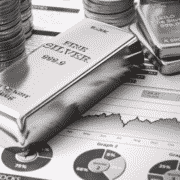Since U.S. President Joe Biden took office, the economy has recovered from the COVID-19 pandemic shutdowns and is now advancing, just as economists expected in 2019 before the pandemic was on the horizon.
Price Increases and Inflation
The rub is that prices have jumped 18% on Biden’s watch, and inflation continues well above 2% a year. During former President Donald Trump’s first three years in office, U.S. inflation was about 2%.
Understanding Market Dynamics
On inflation, Biden gets all the blame. That’s unreasonable, and reflects many people’s unwillingness to appreciate how markets work and prices are determined.
Supply Chain Disruptions
During the pandemic and early recovery, domestic and global supply chains broke down — recall shortages of computer chips and West Coast ports backing up. Ultimately, lockdowns in China curtailed imports of components and finished manufactures.
Impact of Consumer Behavior
With more Americans working from home and many service establishments closed, consumers spent more heavily on some goods than services, stressing limited supplies.
Federal Reserve Studies
Studies at the U.S. Federal Reserve indicate about half of the runup in prices could be attributed to supply constraints, which the Biden administration had little role in creating.
Government Stimulus Spending
The U.S. government poured about $4.6 trillion into unemployment benefits, aid to states and local governments and other stimulus spending. This was enabled by the Fed expanding its balance sheet to monetize much of the resulting new federal debt.
Money Supply and Savings Surge
The Fed printed money, but the inflation economists would expect didn’t happen right away for good reasons. Household savings surged above trend by about $2.1 trillion and did not start to fall significantly until late 2021 and decline rapidly before early 2022. Similarly, state and local governments couldn’t spend the COVID aid as fast as it arrived.
Excess Aid Distribution
All the savings suggest that the aid the Trump administration distributed was far in excess of what was needed to keep households, small businesses and state and local governments afloat during the shutdown.
Economic Implications of the Pandemic
The classical quantity theory of money traditionally stipulates that full employment is necessary for an increase in the money supply to result in higher prices. However, following the surge in U.S. unemployment from 3.5% in February 2020 to 14.8% two months later, the country did not return to pre-COVID employment levels until March 2022.
Convergence of Forces in 2022
In the spring of 2022, a convergence of two significant factors occurred. Firstly, pandemic relief funds were being spent more actively, and concurrently, labor markets were reinstated to full employment status. Consequently, the delayed consequences of monetary expansion materialized in April 2022. Despite the Federal Reserve’s denial of responsibility and insistence that price increases were transitory, inflation escalated to 9.1% by June 2022.
Attribution of Responsibility
If culpability is to be assigned, it must be noted that Fed Chair Jerome Powell delayed decisive actions, President Trump oversaw the majority of the $4.6 trillion stimulus package, and President Biden received warnings regarding the last $1.9 trillion tranche being deemed reckless.
Political Ramifications
With President Biden up for re-election, recent polls reveal a notable discrepancy between voter approval and disapproval of his handling of inflation. Although inflation may have decelerated slightly, the persistent nuisance of rising prices coupled with popular sentiment pose challenges for a sitting president.
Mixed Economic Performance Under Different Administrations
Despite robust economic growth, declining unemployment, and a moderation in inflation, a majority of voters express dissatisfaction with President Biden’s economic management. Even under the leadership of President Trump, who also favored large deficits, there are doubts regarding whether Americans would have fared better in terms of inflation.
-
It is speculated that true inflation may have peaked at 18% in late 2022 and currently remains around 8%.
-
Explore historical instances when U.S. stock markets experienced rapid ascents, such as during the dot-com bubble and post-recession periods.











Comments